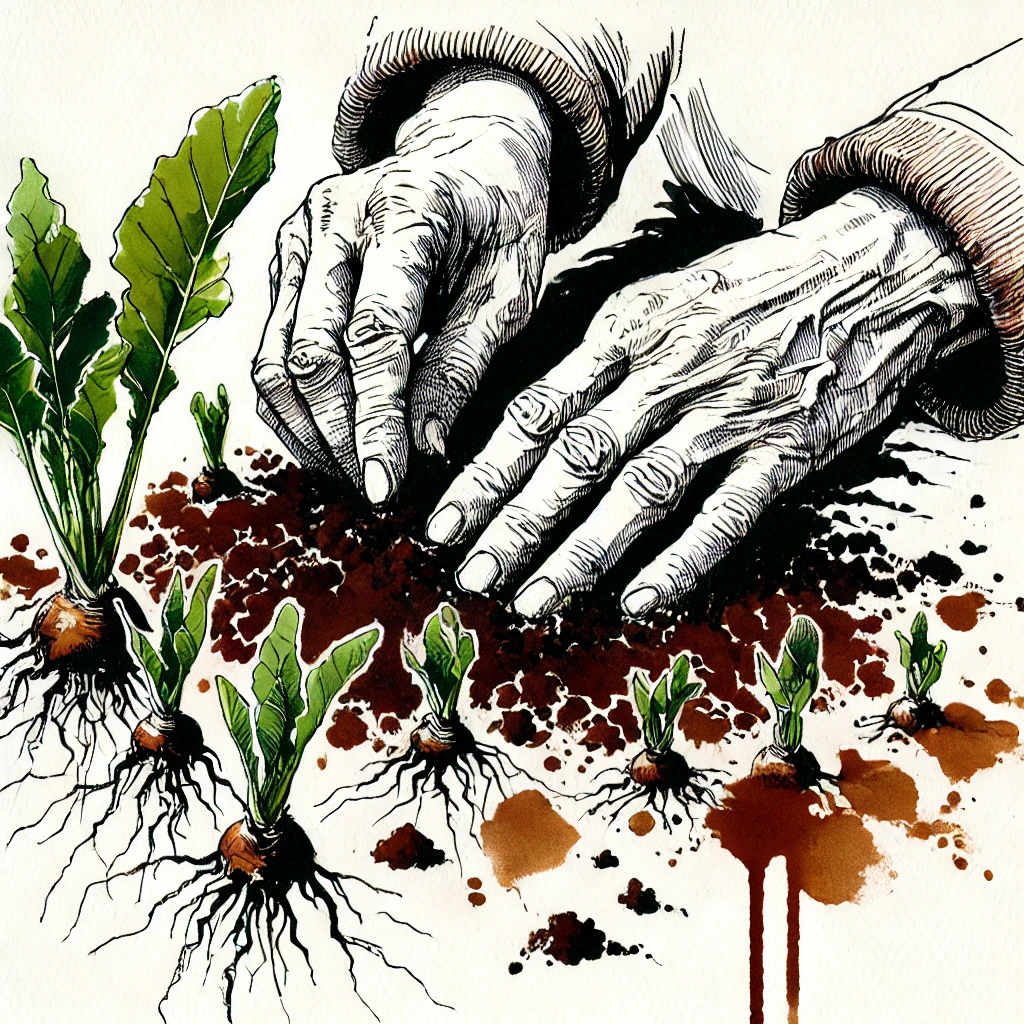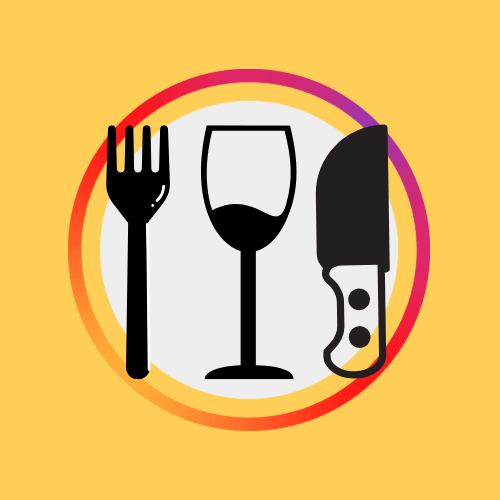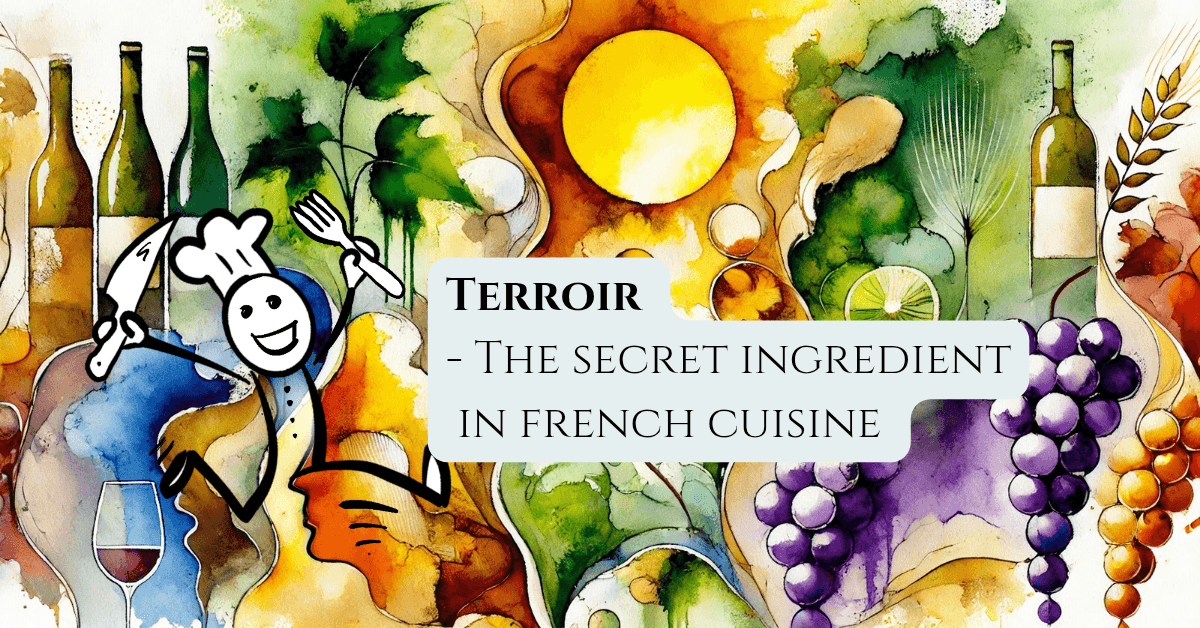Ah, terroir—the word that’s impossible to translate but defines everything exquisite about French food and wine. For the French, it’s not just a romantic notion; it’s the lifeblood of their culinary identity. This is after all a country that grows and eats it’s own food, improving less than 10% of its food supplies in 2023 (source). Whether you’re biting into a buttery croissant in Paris, sipping a glass of Cote de Provence on a sunlit terrace, or feasting on Raclette cheese after a day skiing, you’re tasting the essence of terroir.
But terroir isn’t just something for French farmers or Michelin-starred chefs. It’s something we can all connect to—wherever we are. Let’s explore what terroir really means, why it’s so fundamental to French cuisine, and how you can harness its principles to elevate your cooking at home.
Table of Contents
What Is Terroir?
At its core, terroir refers to the unique combination of environmental and human factors that give food and wine their distinct flavor: soil composition, climate, topography, farming traditions, and, crucially, the skill and care of the people producing it. It’s why Burgundy wines taste different from those of the Rhône Valley, and why a strawberry from Dordogne seems to sing compared to a bland supermarket version.
But here’s the magic of terroir: it’s deeply human. The choices a farmer makes—what to grow, how to grow it, when to harvest—play as much of a role as the natural elements. This dynamic relationship between people and place is what creates exceptional flavor.

Experiencing Terroir in France
France is a living, breathing showcase of terroir. For me, the truth about why french food tastes the best starts with where it comes from, the bountiful regions of France, it’s terroir. To truly experience each individual Terroir you need to visit each bountiful region of france where you can learn why the locals love their unique terroir and spoon feed it to visitors in the supermarket iles, evening news and local restaurants.
But it is not practical for most to begin the lifelong journey to understand all of france’s terroir that I have started.
To experience terroir, you need to understand that each region of France tells its own story through its food and wine. Here are a few iconic examples:
- Champagne: A cool, chalky region that produces the world’s finest sparkling wines. With it’s rich frivolous cousins the Parisians just down the road the people of champagne turned the challenge of growing grapes in colder climates into the sparkling wine we all adore.
- Provence: Sun-drenched fields of herbs, olives, and tomatoes bursting with flavor. The people of the south prefer to take their time to savour life as the natural bounty of the earth provides for them.
- Burgundy: Limestone soils that lend a signature minerality to wines, alongside world-renowned mustard and cheeses.
- Normandy: Lush, rainy pastures that yield the best butter, cream, and apples for cider. Here humans have warred since the romans and vikings for the rich abundant lands that provide those truly onctious mouthfuls.
If you’re lucky enough to visit, Paris is the ultimate crossroads of French terroir. Markets like Marché d’Aligre or Marché Bastille bring together produce, wine, and cheese from every corner of France, allowing you to taste the entire country in one city.
This is where the elite chefs from each region visit to elevate and practice their skills. Some stay and open regional restaurants here meaning you can find delicious basque food, wonderful brasseries ran by the auvergniat or taste the delicious wines of burgundy in a cave ran by the grandson of a great winemaker.
Your Terroir Is All Around You
Here’s the twist: you don’t need to live in France to experience terroir. Every region, no matter where you are in the world, has its own distinct flavors. Think about what grows best in your area. Is it sweet corn in the summer? Apples in the fall? Local cheeses or wild mushrooms? Every place has its own culinary identity rooted in the land, and by understanding it, you can improve the way you shop, cook, and eat.
How to Find and Celebrate Your Own Terroir:
- Shop Locally: Farmers’ markets are the easiest way to experience your local terroir. Seek out fruits, vegetables, and meats grown and raised near you—they’ll taste fresher and more vibrant.
- Cook Seasonally: Use seasonal produce as your foundation. Not only will it taste better, but it also aligns with the natural rhythms of the land. Check out our seasonal ingredient guides to get started.
- Support Artisans: Just like the French fromagers and winemakers, there are likely artisans in your area crafting bread, cheese, or preserves with care and passion. Seek them out!
- Experiment with Pairings: Think like a French chef and combine flavors that reflect your region’s identity. If you live near the coast, use fresh seafood; in wine country, build meals around local vintages.

Why I’m Thinking About Terroir Now
It’s late January—the hunger gap. As the last stores of winter produce dwindle and spring’s bounty feels painfully far away, I’ve been thinking about the land, the seasons, and the farmers who sustain us. As a chef, I’m constantly inspired by terroir—not just in France, but in my own garden here in Paris.
This week, I’ve been planning what to grow: a few hardy herbs, maybe some tomatoes later in the year. Growing even a small portion of my own food helps me connect to the land in the same way French farmers do. And it reminds me how much effort goes into every single ingredient we cook with.
How do the French protect their terroir?
The French are fiercely protective of their terroir because it represents not just their land, but their identity and culture. They safeguard it in several key ways:
- AOC (Appellation d’Origine Contrôlée): France’s regulatory system ensures that products like wine, cheese, and butter are produced according to strict standards tied to their region of origin. For example, only sparkling wine from the Champagne region can legally be called Champagne.
- Sustainable Practices: Many French farmers use organic or biodynamic methods to preserve soil health and biodiversity, ensuring the land can continue producing high-quality ingredients for future generations.
- Cultural Heritage: Traditional farming, winemaking, and artisanal techniques are passed down through generations, keeping the connection between people and place alive.
- Legal Protections: French law prevents imitation or misuse of protected regional products, ensuring that the authenticity and integrity of terroir products remain intact.
- Local Markets: French markets prioritize regional and seasonal products, helping to sustain small producers and maintain local food traditions.
To experience how terroir is celebrated and preserved, explore our guide to French markets and see firsthand how these efforts bring the best of the land to your table.
A French Terroir Takeaway for Foodies
The next time you eat something extraordinary—whether it’s a perfect peach in summer or a crusty loaf of bread—take a moment to think about where it came from. What was the land like? Who grew it? What choices did they make? By paying attention to these details, you’ll start to see the terroir in your own backyard.
And when you visit France (because, let’s face it, you know you’re planning to), dive headfirst into the terroir of its regions. Start with Paris and explore the city’s incredible hidden culinary gems or go deeper with a self-guided food tour to savor the best flavors the country has to offer.
Food is never just food—it’s a story of people, land, and love. Whether in France or at home, connecting to your terroir will transform the way you eat. Bon appétit!
Love this? Get more real, unfiltered food stories straight to your inbox. No fluff, no spam—just damn good food writing and all for free!

From the bustling streets of Paris to the heat of a professional kitchen, my life has always revolved around food. A Brit who moved to France at 16, I trained as a chef in a Parisian palace kitchen at 18 and have spent decades cooking, eating, and living like the French.
By day, I run kitchens and events, but Eat Like The French is my side hustle—a way to share my passion for French food through writing and food tours. After a detour into tech recruitment, I returned to what I love most: cooking and storytelling—one dish, one tour, and one bite at a time.
What does terroir mean in food and wine?
Terroir refers to the combination of environmental and human factors—such as soil, climate, farming traditions, and the skill of producers—that give food and wine their unique flavor and character.
Why is terroir important in French cuisine?
Terroir is at the heart of French food and wine culture. It celebrates the connection between a region’s environment, its people, and the food or wine they produce. This respect for terroir is why regional specialties in France are so unique and revered.
How do humans influence terroir?
Humans play a vital role in terroir. Decisions like farming practices (organic or biodynamic), winemaking techniques (fermentation and aging), and harvesting timing shape the final product. French farmers and artisans are masters of this relationship between human expertise and the land.
Can I experience terroir in my own region?
Absolutely! Every region has its own terroir. Visit local farmers’ markets, use seasonal produce, and support nearby artisans to connect with your area’s flavors.
How does terroir influence wine?
Wine is one of the clearest expressions of terroir. Factors like soil type, climate, and vineyard orientation directly influence flavor. For example, Burgundy’s limestone soils create wines with a signature minerality, while Bordeaux’s gravelly terrain produces robust reds.
What makes Paris a showcase for terroir?
Paris is a culinary crossroads where the best of France’s regions converge. Local markets like Marché d’Aligre offer produce, cheeses, and wines from across the country, allowing you to experience the full spectrum of French terroir in one city.
How do French farmers embody terroir?
French farmers and artisans don’t just grow food—they elevate it. They use traditional methods, nurture their land, and innovate within their environment to create exceptional products like Champagne, foie gras, and chèvre.
Why is terroir relevant now?
Terroir is more relevant than ever because the very foundation of it—farmers, climate, and the land—is under threat.
Farmers, the heart of terroir, are facing immense challenges. Rising costs, unfair systems that undervalue their work, and unpredictable market pressures are forcing many out of their livelihoods.
Add to that the growing threat of climate change, which disrupts traditional growing seasons, alters soil quality, and creates extreme weather events, and the fragility of terroir becomes painfully clear.
This time of year—the hunger gap—is particularly challenging. It’s the season when stored winter produce is running low, and the first signs of spring’s bounty haven’t yet arrived. Farmers must carefully manage dwindling resources while preparing for the next growing cycle, often with fewer financial and environmental guarantees than ever before.
Why should this matter to us?
Because when farmers lose their ability to work the land, we lose more than food—we lose centuries of tradition, flavor, and cultural identity. Without support, the very essence of terroir could disappear.
Supporting farmers, shopping locally, and valuing the human and environmental elements of food are vital if we want to preserve terroir and the flavors that connect us to the land. Now is the time to act.


2 thoughts on “What Is Terroir? How It Defines French Food, Wine—and Your Own Cooking”